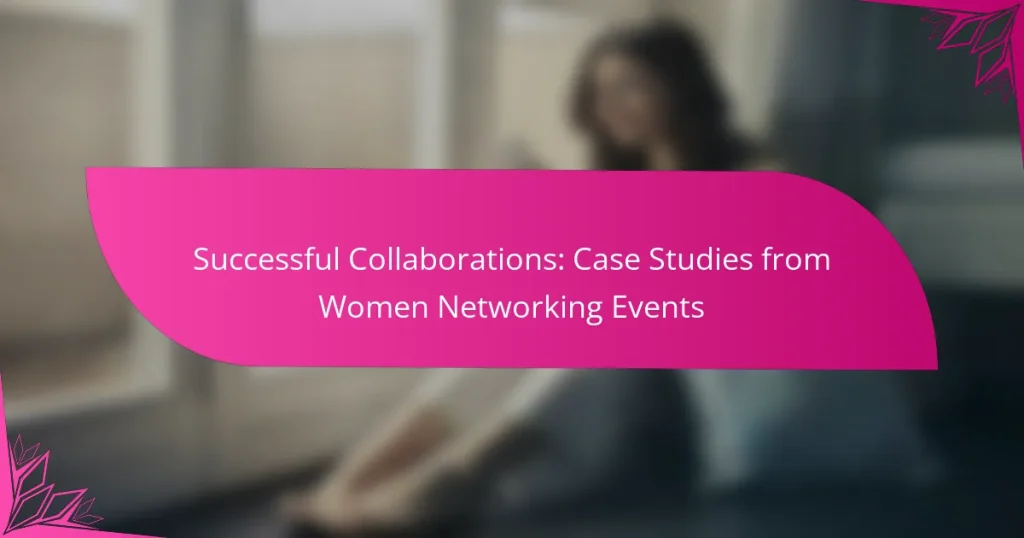Women networking events serve as vital platforms for fostering collaboration among individuals with shared aspirations. Through structured activities and inclusive environments, these gatherings not only facilitate relationship-building but also empower women across diverse industries, leading to impactful partnerships and professional growth.
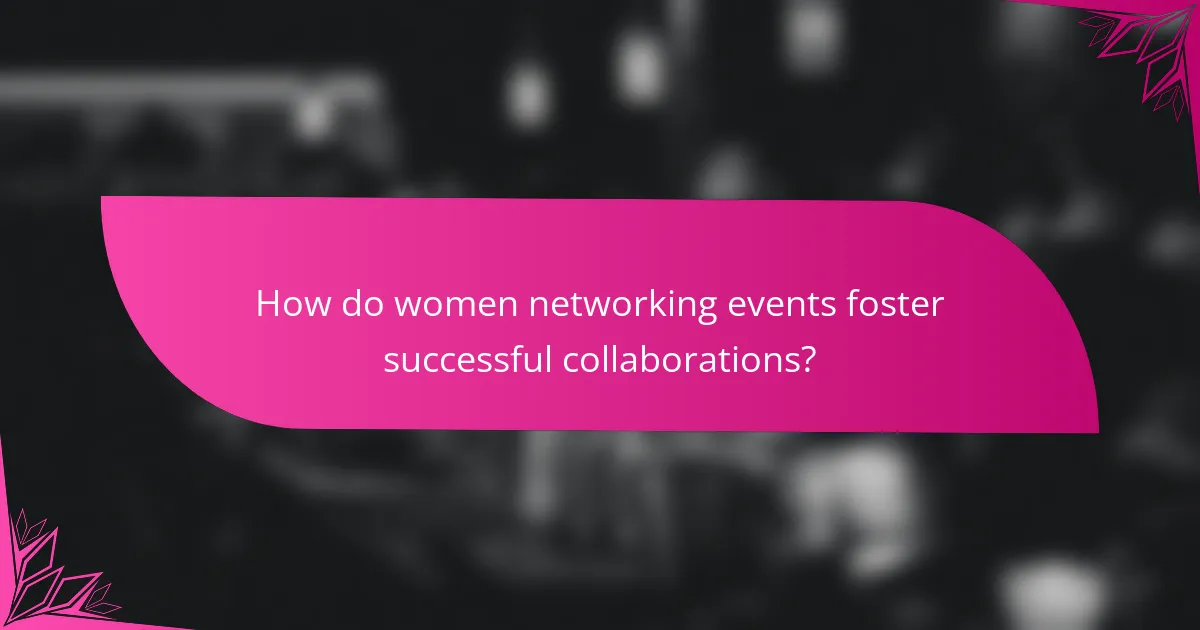
How do women networking events foster successful collaborations?
Women networking events create environments that encourage collaboration by connecting individuals with shared goals and interests. These gatherings facilitate relationship-building, leading to partnerships that can enhance personal and professional growth.
Building supportive communities
Supportive communities are essential for fostering collaboration among women. Networking events provide a platform where women can share experiences, challenges, and successes, creating a sense of belonging. This support helps members feel empowered to pursue their goals and collaborate effectively.
For instance, local meetups or online forums can serve as safe spaces for women to discuss industry-specific issues, share advice, and celebrate achievements. Such interactions often lead to lasting friendships and professional alliances.
Facilitating mentorship opportunities
Mentorship is a crucial aspect of women networking events, as it connects less experienced individuals with seasoned professionals. These events often feature structured mentorship programs, allowing participants to seek guidance and insights tailored to their career paths.
For example, a networking event might pair emerging leaders with established executives, fostering knowledge transfer and skill development. This relationship can lead to collaborative projects and increased visibility within their industries.
Encouraging resource sharing
Resource sharing is a key benefit of women networking events, where participants exchange tools, knowledge, and contacts. This practice enhances collaboration by providing access to valuable resources that may not be available individually.
Women can share everything from industry reports to software recommendations, helping each other overcome obstacles. For instance, a group might create a shared document outlining funding opportunities or best practices for work-life balance.
Creating accountability partnerships
Accountability partnerships are formed when women in networking events commit to supporting each other’s goals. These partnerships encourage regular check-ins and progress updates, fostering a sense of responsibility and motivation.
For example, two professionals might agree to meet monthly to discuss their objectives and challenges, providing encouragement and constructive feedback. This structure can significantly enhance goal achievement and collaboration over time.
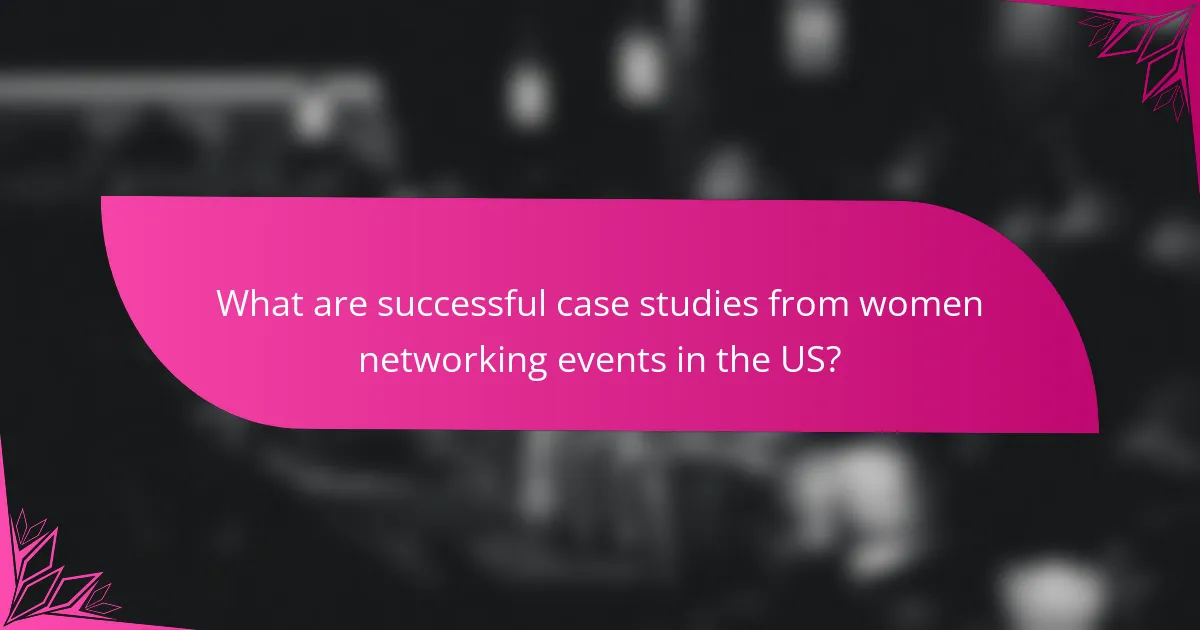
What are successful case studies from women networking events in the US?
Successful case studies from women networking events in the US showcase how these gatherings foster collaboration, mentorship, and professional growth. They highlight the impact of community support in empowering women across various industries.
Women Who Code: Tech mentorship success
Women Who Code is a global organization that focuses on empowering women in technology through mentorship and networking. Their events often feature experienced professionals who provide guidance and support to those entering the tech field, creating a strong sense of community.
Participants can engage in coding workshops, hackathons, and mentorship programs that help them build skills and confidence. This hands-on approach not only enhances technical abilities but also facilitates valuable connections with industry leaders.
Lean In Circles: Empowering professional growth
Lean In Circles are small, peer-led groups that meet regularly to discuss challenges and share experiences related to professional development. These circles create a safe space for women to support each other in their career journeys, fostering accountability and encouragement.
Members often discuss topics such as negotiation strategies, work-life balance, and leadership skills. By participating in these circles, women can gain insights from diverse perspectives and develop actionable strategies for advancing their careers.
She Leads: Networking for entrepreneurs
She Leads is a networking initiative designed specifically for women entrepreneurs. It provides a platform for women to connect, share resources, and collaborate on business ventures. Events often include panel discussions, workshops, and networking sessions that focus on entrepreneurship and business growth.
Participants can learn from successful female entrepreneurs and gain practical advice on funding, marketing, and scaling their businesses. This supportive environment encourages collaboration and helps women navigate the challenges of entrepreneurship effectively.

What strategies enhance collaboration at women networking events?
Effective collaboration at women networking events is often achieved through structured activities, inclusive design, and robust follow-up mechanisms. These strategies foster meaningful connections and ensure participants feel valued and engaged.
Structured networking activities
Structured networking activities, such as speed networking or facilitated discussions, create focused environments for participants to connect. These formats encourage attendees to share their experiences and expertise in a time-efficient manner, often leading to deeper conversations.
Consider incorporating icebreakers or themed discussions to guide interactions. For example, a session on overcoming industry challenges can prompt relevant dialogue and foster collaboration among participants with similar experiences.
Inclusive event design
Inclusive event design ensures that all participants feel welcome and valued. This can be achieved by considering diverse backgrounds, experiences, and needs in planning. For instance, providing materials in multiple languages or ensuring accessibility for individuals with disabilities can enhance participation.
Additionally, creating a safe space for sharing ideas and experiences is crucial. Establishing ground rules that promote respect and openness can help participants engage more freely, leading to stronger connections and collaborations.
Follow-up mechanisms for participants
Implementing follow-up mechanisms is essential for sustaining connections made during networking events. This can include sending out post-event surveys or newsletters that highlight key takeaways and encourage ongoing dialogue among participants.
Consider creating a dedicated online platform or group where attendees can continue discussions, share resources, and collaborate on projects. Regular check-ins or virtual meet-ups can also help maintain relationships and foster a sense of community beyond the event.
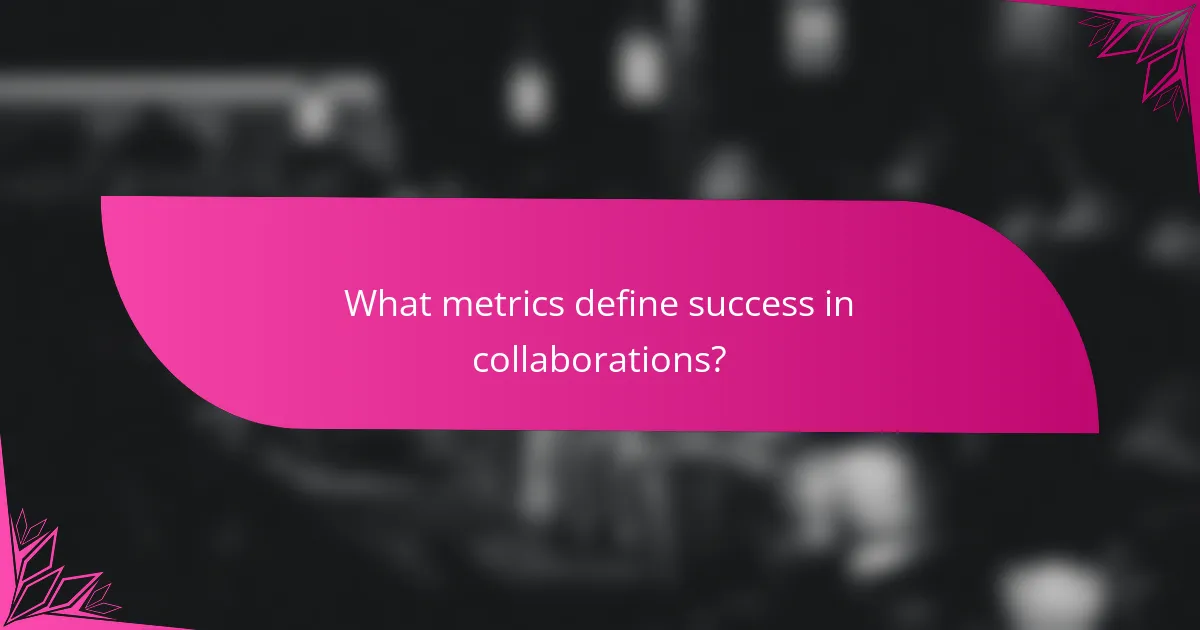
What metrics define success in collaborations?
Success in collaborations can be defined by several key metrics, including the formation of new partnerships, the expansion of professional networks, and the rates of career advancement among participants. These metrics provide a clear framework for evaluating the effectiveness of networking events tailored for women.
Increased partnership formations
One of the primary indicators of successful collaborations is the number of new partnerships formed as a result of networking events. This can include formal business alliances, mentorship pairings, or collaborative projects. Tracking the number of partnerships initiated during and after events can help assess their impact.
To maximize partnership formations, events should facilitate structured networking opportunities, such as speed networking sessions or breakout discussions. Providing clear goals and follow-up mechanisms can enhance the likelihood of sustained collaborations.
Growth in professional networks
Another vital metric is the growth of professional networks among attendees. Successful collaborations often result in participants expanding their connections, which can lead to future opportunities. Measuring the increase in contacts on platforms like LinkedIn can provide tangible evidence of network growth.
Encouraging attendees to share their professional backgrounds and interests can foster meaningful connections. Organizing activities that promote interaction, such as group workshops or panel discussions, can further enhance networking outcomes.
Improved career advancement rates
Improved career advancement rates serve as a crucial measure of collaboration success. This can be evaluated by tracking promotions, job placements, or skill development among participants after attending networking events. A noticeable increase in these areas indicates effective collaboration and support.
To support career advancement, events should offer resources such as workshops on resume building, interview techniques, and personal branding. Providing access to industry leaders for mentorship can also significantly impact participants’ career trajectories.
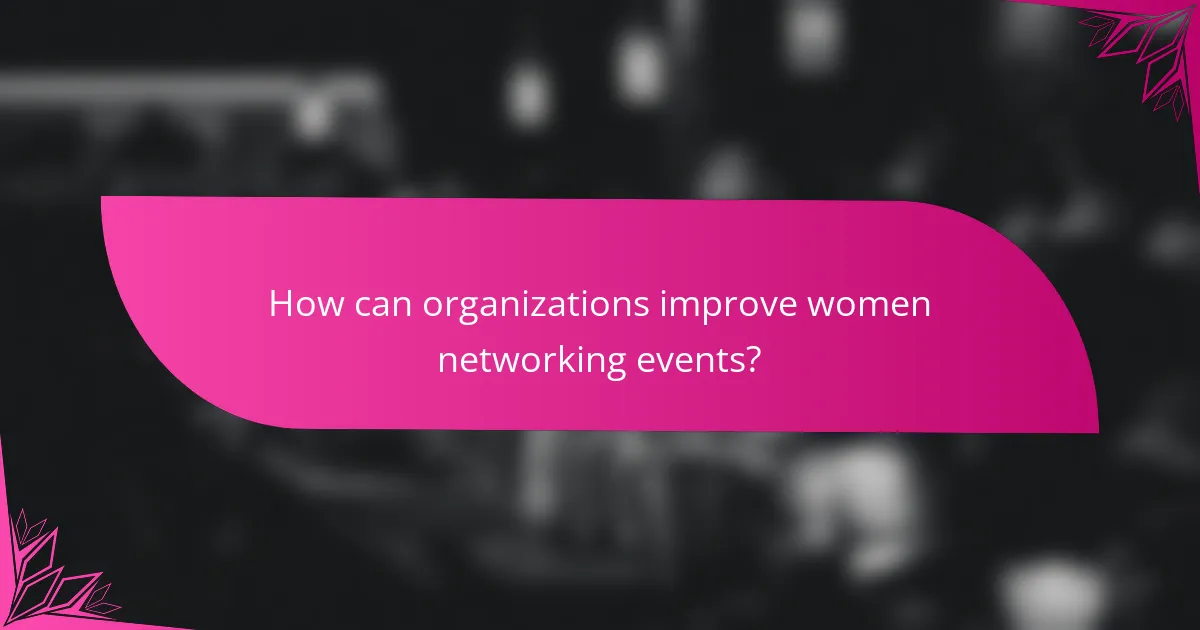
How can organizations improve women networking events?
Organizations can enhance women networking events by focusing on participant feedback, engaging diverse speakers, and tailoring content to specific industries. These strategies create a more inclusive and effective environment that fosters meaningful connections and professional growth.
Feedback collection from participants
Collecting feedback from participants is crucial for improving future events. Organizations can use surveys or informal discussions to gather insights on what attendees found valuable and what could be improved. Aim for a response rate of at least 30-50% to ensure the feedback is representative.
Consider implementing feedback loops where participants can see how their input has influenced changes in subsequent events. This not only encourages engagement but also builds a sense of community among attendees.
Diverse speaker engagement
Engaging a diverse range of speakers is essential to provide varied perspectives and experiences. Organizations should aim to include speakers from different backgrounds, industries, and career stages to enrich discussions. This diversity can help attendees relate to the content and feel more connected to the event.
When selecting speakers, consider their ability to engage the audience and share actionable insights. A mix of established leaders and emerging voices can create a dynamic environment that appeals to a broad audience.
Tailored content for specific industries
Tailoring content to specific industries ensures that the topics discussed are relevant and applicable to attendees’ professional contexts. Organizations should research the industries represented in their audience and customize sessions accordingly. This approach can enhance engagement and provide practical takeaways.
Consider offering breakout sessions focused on particular sectors, such as technology, finance, or healthcare. This allows participants to dive deeper into industry-specific challenges and solutions, fostering more meaningful connections and discussions.
